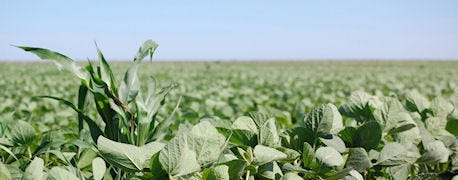
Rarely a concern for Illinois farmers, herbicide carryover poses a significant problem for wheat growers this year.
Southern Illinois University weed specialist Bryan Young is most concerned about fields that were treated late with atrazine. He's thinking specifically of double-crop soybean fields that were sprayed in mid- to late-July.
If those fields have a pH above 7.0, the risk only increases further. Add in severe drought conditions and growers are looking at a serious risk for herbicide carryover, Young notes.
"A lot of people think enough rainfall will remove the carryover risk," Young adds. "You have to remember that time is a big part of this too."

Herbicide Carryover Could Pose Big Problems for Wheat Growers
In a Collinsville trial, Young treated a flush of weeds with 2 lbs of atrazine per acre in early July. The field collected two inches of rain by the time they planted wheat. The wheat emerged with no signs of herbicide damage.
Young treated a neighboring field with 1 lb of atrazine in the third week of July. Again, it saw two inches of rain prior to wheat planting. However, this wheat emerged with signs of herbicide damage.
"That emphasizes to me that it's time, not just rainfall that determines carryover," Young notes.
If folks suspect they could have an issue with herbicide carryover, Young advises them to plant those fields last. "If there was ever a year to abide by the Hessian fly free date, it's this year," he notes.
Field vs. lab trials
In early September, University of Illinois weed specialist Aaron Hager collected soil samples from the Urbana, Brownstown and Perry test plots.
Hager says his team has detailed records on which herbicides and what quantities were applied at each of these test plots, along with specific weather records. The goal was to see if herbicide carryover is a significant risk for the winter wheat season.
The soil collections were placed in greenhouse pots. Half the pots were sub-irrigated for 7 days prior to planting corn, soybean, or wheat, while the other pots were sub-irrigated only after planting.
Crop species emerged within 7 days after planting. Emerged wheat growing in soil collected at Perry began to demonstrate symptoms of injury from some herbicides within a few days after emergence, suggesting that herbicide residues remain high enough to cause injury to the crop. Injury symptoms have not developed on emerged wheat growing in soil collected from Urbana and Brownstown.
In late September, Hager's team began testing for herbicide injury in field trials. He noted that initial observations did not indicate significant herbicide injury.
About the Author(s)
You May Also Like




